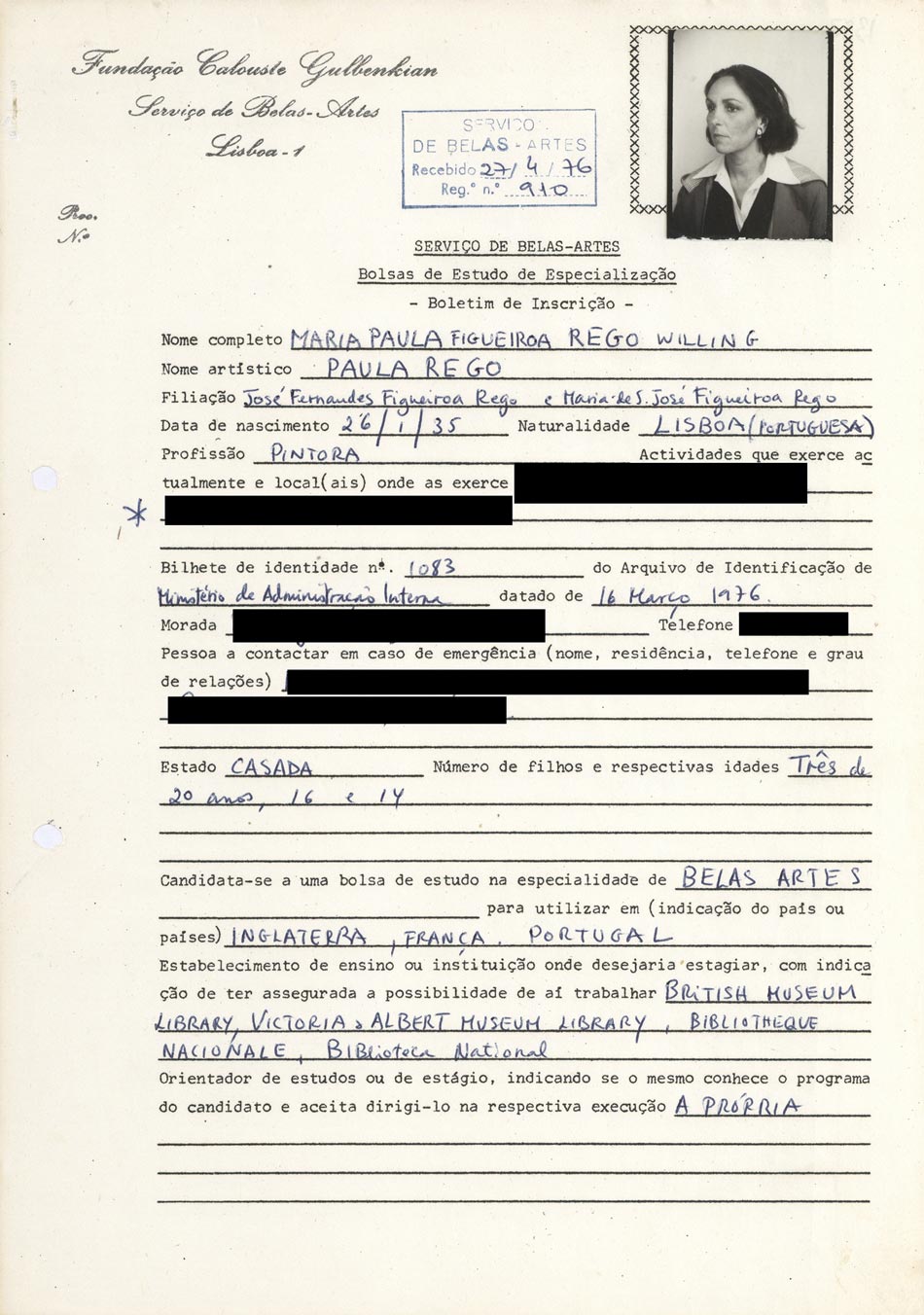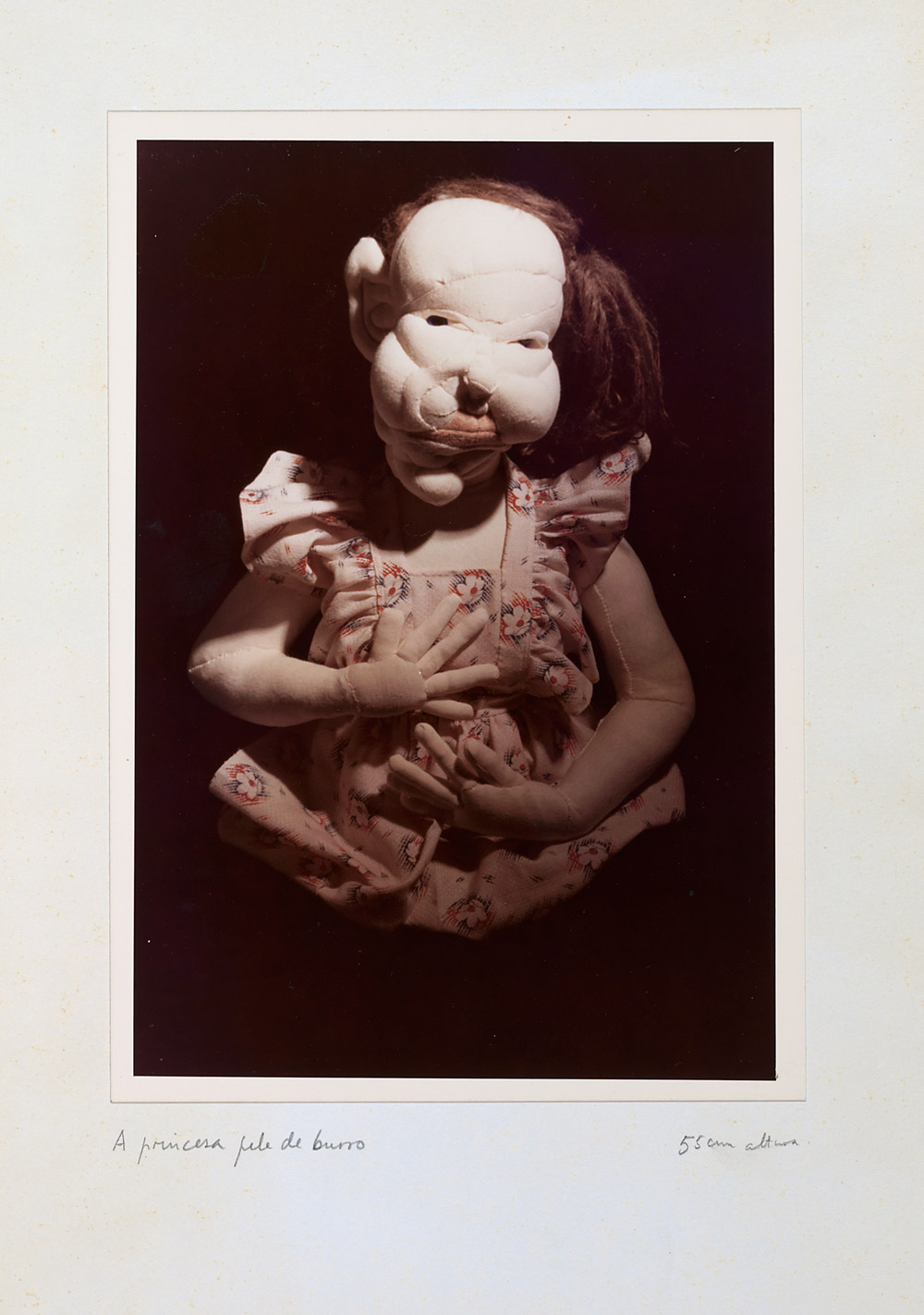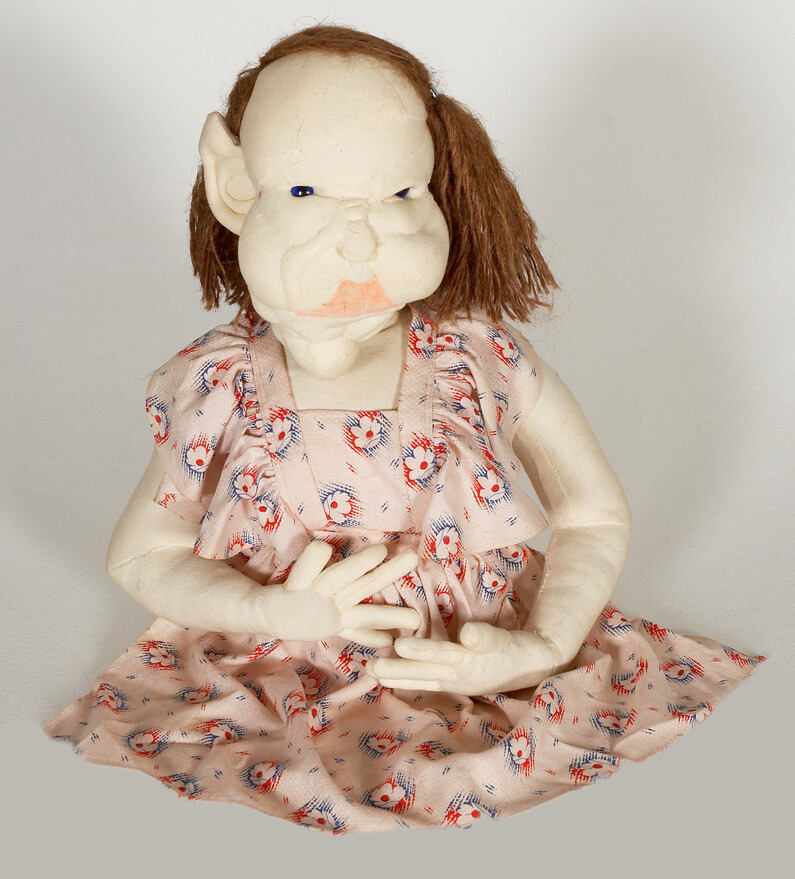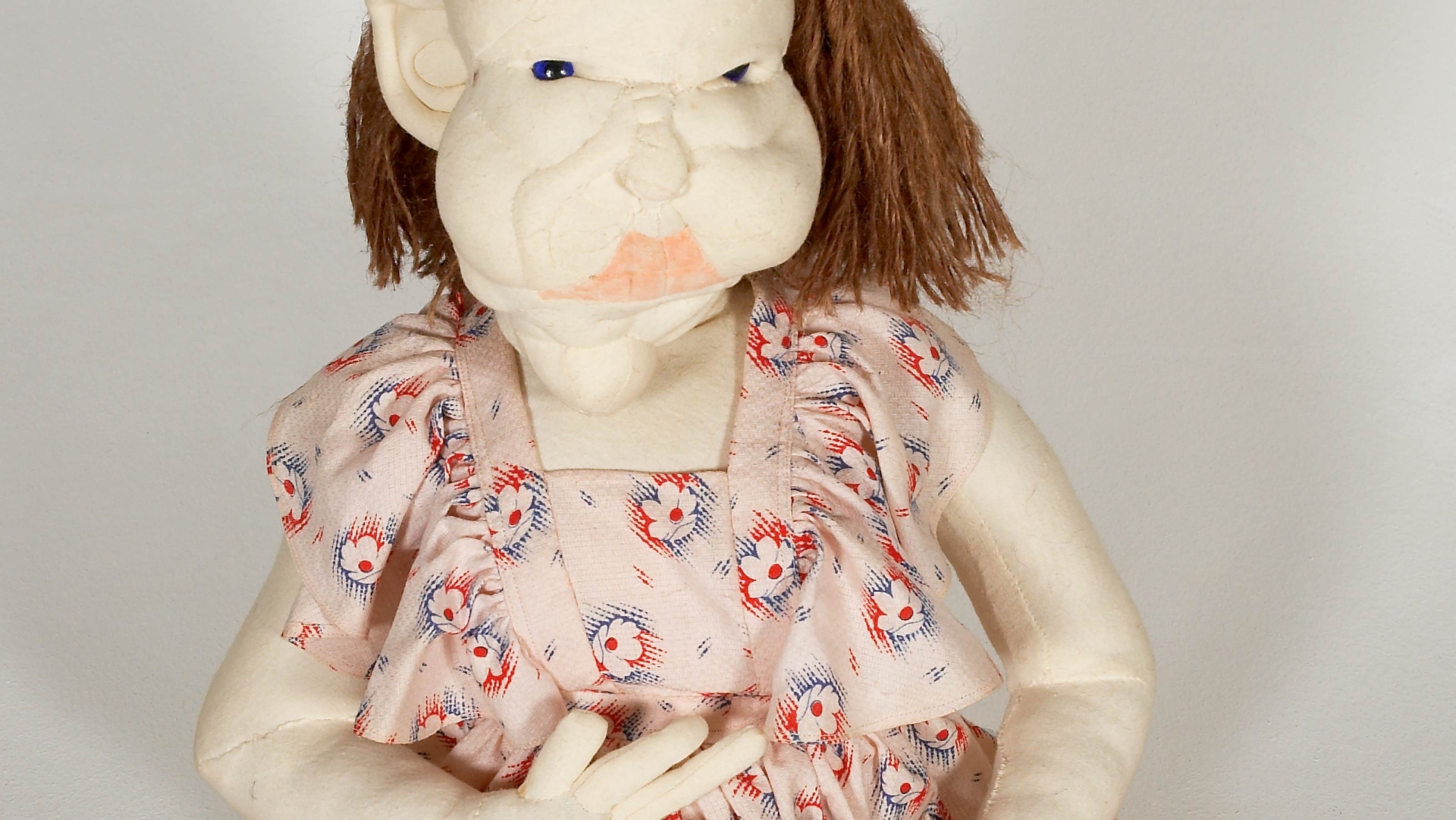A Princesinha Grávida
In April 1976, Paula Rego sent the Calouste Gulbenkian Foundation a request to support her research on fairy and folk tales. The artist finished her programme of study expressing her intention to ‘illustrate more prolifically traditional Portuguese tales or integrate these same eternal tales into our contemporary mythology and personal experience through painting.’ [1] A Princesinha Grávida [The Pregnant Princess] was the result of this investigation, which focussed on studying these stories, their circulation around the world and their illustration over time.

We thus find the first record of this sculpture/textile object or ‘doll’, as Paula Rego calls this type of work, in the report she sent to the Foundation in 1978. The work is accompanied by photographs of other characters that recall the universal imagery of fairy tales (like O Príncipe Perfeito [The Perfect Prince], also from the CAM’s collection), which the artist made out of cloth and gave a three-dimensional presence. A Princesinha Grávida, named in the report as A Princesa Pele de Burro [The Donkey-Skin Princess], demonstrates the attention Paula Rego gives to tales with female protagonists, and which refer to the experience of women, especially the challenges and violence of their initiation into a world dominated by men.

The tale that inspired this work was taken from the 17th-century compilation of Charles Perrault. It describes a widowed king’s harassment of his own daughter, and clearly deals with the theme of incest. The change of the title to A Princesinha Grávida reveals the intervention of the artist herself in the story and establishes an alternative version in which incest, rape and teenage pregnancy are possible endings. Paula Rego’s appropriation of the tale also determines the princess’s configuration: the deformed face, marked by stitches, the hair made out of wool and the simple and mundane materials distance her from an idealised and inaccessible beauty and bring her very close to the everyday world.

A Princesinha Grávida is thus the result of a creative process that subjectively interprets traditional tales and constitutes a ‘personal universe’, as Paula Rego explained in a conversation with Salette Tavares.[2] The artist had already worked with fabrics in the creation of two-dimensional compositions, such as tapestries, but her approach to the tales led her to produce the ‘dolls’. These began, from the end of the 1970s, to inhabit her creative universe, sometimes as artworks, sometimes as models or elements of the sets the artist built, later on, as a basis for her painting.[3]
[1] See the catalogue Paula Rego: Contos tradicionais e contos de fadas. Cascais: Fundação D. Luís I: Casa das Histórias Paula Rego, 2018.
[2] Salette Tavares, ‘Dados para uma leitura de Paula Rego’, Expresso (20 Jul 1974), p. 14.
[3] Catarina Alfaro, ‘Desenhar, encenar, pintar: Processos de intimidade criativa’, in Paula Rego: Desenhar, encenar, pintar. Cascais: Fundação D. Luís I: Casa das Histórias Paula Rego, 2019, p. 22 and 23.

